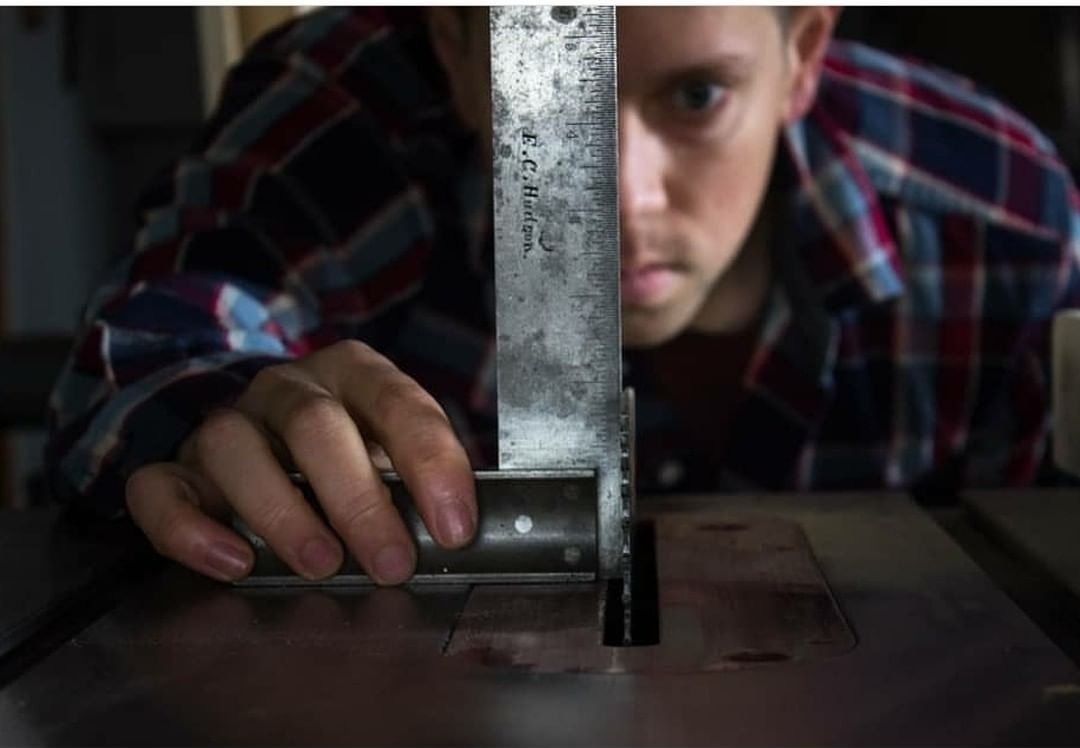Volume 4 - hone your creativity
Hone your Creativity: The Importance of Pattern Recognition
Writer’s block. Creative slump. Artistic depression. Call it what you will, we’ve all suffered from it; that inability to harness our creative powers when we most need them. Like trying to rid yourself of a bad case of the hiccups, there are any number of home-grown “remedies” for boosting your creative juices that read more like an 1800’s frontier folklore journal than a practical way to improve the skills you probably already have.
Granted, there is no one-size-fits-all, once and done method for solving all of your creative problems. However, by understanding what our creativity is and how we can further develop it you can greatly improve your creative super powers. Oh and don’t worry, no crazy old-timey solutions here- you won’t be required to wear the pelt of a virgin Muskrat while smashing a raw egg on your right thigh…unless of course you want to. No judgement. Ok, a little.
What a Dilemma!
Creativity is not magic. It is not something that only artsy folk who live on the fringes of society or high-IQ, PHD-wielding theoretical scientists posses. “Creativity is just problem solving.”* I have yet to find a more succinct definition than this one, quoted from Charles Duhigg’s Smarter Faster Better. That really is all there is to it. Our ability to use our imagination to come up with unique ideas or solutions to difficult problems is the basis for our creativity. Like any other skill, it takes time to develop and we are not gifted with an infinite supply of it. From time to time it feels like we’ve tapped our creative wells. So, how do you go about squeezing out just a few more drops of that problem-solving-goodness?? The simple answer: Puzzles.
“Creativity is just problem solving.”
I got Puzzle Problems
Now for the complicated answer. If you’ve ever taken the time to complete a complex jigsaw puzzle, I’m talking 500 piece or 1000 piece (or even 5000 piece puzzles for all you extra credit kids out there), then you have already mastered the skills it takes to kick your creativity up to 11. The process for solving one is pretty much the same no matter the size or the subject, and we can narrow it down to three fundamental stages:
Data Consumption
Pattern Recognition
Filling in the gaps
This may sound like overkill for a simple pastime that’s mostly relegated to power outages and nursing homes, but don’t let the simplicity of a puzzle fool you! There is a mountain of analytical problem solving going on that, when applied to real-world problems, can teach us quite a bit about how we develop and grow our creative abilities. So, let’s dive right in.
It’s time to reach into the deep, dark nether regions of that long forgotten top shelf in the closet, dust off your grandma’s 1983 Fancy Cats: Kitten Edition 750 piece puzzle and get to work!
Data Consumption. The first thing most of us do when we start a puzzle is to flip the box over, empty all the pieces out onto the table, and start the long tedious process of flipping each piece right side up, taking stock of what you have, and making as many mental notes as possible. This may seem obvious and insignificant to most of us, but understand that what you’re doing is creating a thorough and extensive library of puzzle pieces to draw from; a puzzle “vocabulary”. The result is that throughout the rest of the puzzle process anytime we see a void or a shape we think “oh I’ve seen that piece! I know where it is,” and we can instantly grab the right one. The more time we spend on this part of the process, the more information we’ll have to work with down the road.
Similarly, the first and usually never ending step of honing our creativity is to build up our mental library. Expose yourself to as much creative content as you can. When it comes to your field of artistry/creative work (journalism, photography, woodworking, painting, etc.) read magazine articles and books, watch videos, attend classes, go to museums, listen to podcasts, take note of your own life experiences…read witty blog posts..* wink wink, cough, cough *. Continue to expand your creative vocabulary and you will have a wealth of knowledge to pull from when it comes time to put pen to paper or chisel to wood. For an added bonus, try to learn about similar fields of study or craft. You’d be surprised how often you can solve a problem for a specific craft using methods, techniques, or tools from another craft. Once your mental Dewey Decimal system is full to bursting, it’s time to start organizing the chaos!
Pattern Recognition. Arguably the most time consuming part of the process, fitting the pieces together is what a puzzle is all about. This is where our vast library starts to pay off. We can start categorizing the pieces into likely patterns: edge pieces, similar shapes, colors, and images. We start to test the fit of each one, and through trial and error we slowly start to develop a system that works. Usually, we make the outer boundaries, then we can fill in areas little by little. As the empty space dwindles and the puzzle starts to fill in we start to get a clear sense of what the final result will be. Using our defined puzzle vocabulary and reinforcing the patterns we’ve learned through testing, the puzzle will become a lot less daunting- it’s just a matter of patience and time.
In order to sharpen those creativity skills, we too must be patient as we methodically develop the patterns that define our craft. Our mental library is full of knowledge but it’s not until we commit ourselves to practicing what we learn that we can build the muscle memory, avoid the pitfalls, and attain a deeper mastery of these skills. Over time we not only learn the basic patterns needed to succeed, but eventually we will have the ability to see new patterns arise as our brain starts to automatically take the lessons you’ve learned and apply them to new situations in unique ways - like working a mental Rubik’s Cube until you’ve got it just right.
Understandably, this can be the hardest and most time consuming part of your creative journey. According to neurologist Daniel Levitin “The emerging picture from (…) studies is that ten thousand hours of practice is required to achieve the level of mastery associated with being a world-class expert — in anything.”** So to put that into perspective, if you trained for 8 hours a day, 7 days a week, it would take 3.4 years to reach the 10,000 hour mark. Realistically, it takes most experts about 10 years to achieve such a level of mastery. Don’t let this number scare you, as you get more and more practice under your belt your creative puzzle will gradually start coming together until all you have left are just a few empty spaces.
Filling in the gaps. You’re on the home stretch! The puzzle is taking shape, you’ve gone from a loose boundary with a few pieces here and there to a recognizable image with only a couple of voids left to fill. You’ve studied the pieces, learned how they fit together through practice and trial and error. Now is the part everybody enjoys, placing the last few pieces in and completing what once seemed like an impossible task…and then throwing it all back into the box, placing it in the attic and forgetting about it for like 10 years.
In this puzzle analogy this may seem like the easiest step. However, from a creative standpoint this is usually where we get stuck. This is when we’ve written 3/4 of our novel but can’t figure out how end it. We’ve painted a beautiful portrait but can’t quite get the eyes right. We’ve built a perfect period reproduction furniture piece but can’t get the smooth, shiny luster on the finish. How do we get past our creative block?? Well, why does it seem so easy to finish the last few bits of a puzzle?
Putting the pieces together
Undoubtedly, if you completed the puzzle, it’s because you made the effort to learn about the puzzle, and devoted the time to put what you learned into practice. Likewise, when we come across problems that require a creative solution we must take in as much knowledge as we can on the subject. What are good literary techniques for completing a story? How have other artists used proportion and value to accurately depict the human form? Is there a historically accurate recipe for finishing furniture that will give the desired effect? Continually expanding our creative vocabulary will give us a wealth of knowledge to draw from when a problem arises. Knowledge alone, however, won’t get us over the hump. It’s time to put your nose to the grindstone and practice what you learn. Develop the coordination, muscle memory, and mental acuity to masterfully apply a solution. Now, when a problem comes up you have the skill AND experience to put those last few puzzle pieces in, fill in those creative gaps, and create something amazing!
- Steve
*Charles Duhigg, Smarter Better Faster p.237, 2016
**Malcolm Gladwell, Outliers p.40, 2008


